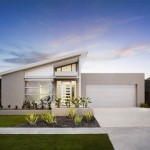Club Moss Houseplant
Club moss, often mistaken for a moss or fern, is a unique and fascinating houseplant belonging to the ancient family Selaginellaceae. These plants, sometimes referred to as spike mosses, offer an intriguing glimpse into the plant kingdom's evolutionary past, having thrived for millions of years. Their delicate, scale-like foliage and creeping growth habit make them a captivating addition to any indoor plant collection.
While the common name suggests a relationship to mosses, club mosses are vascular plants, possessing specialized tissues for transporting water and nutrients, a characteristic they share with ferns and seed plants. This distinguishes them from true mosses, which lack such a vascular system. They reproduce through spores, rather than seeds, further setting them apart from flowering plants.
Several species of club moss are well-suited for indoor cultivation, each offering its own unique charm. *Selaginella kraussiana*, often called Krauss's spikemoss, is a popular choice known for its vibrant green, spreading foliage. *Selaginella uncinata*, commonly known as peacock moss or blue spikemoss, exhibits an iridescent blue-green sheen, adding a touch of vibrant color to indoor spaces. *Selaginella martensii*, or Frosty fern, boasts upright, branched stems and a textured appearance.
Cultivating club moss indoors requires attention to their specific needs. These plants thrive in humid environments, reminiscent of their natural habitats. Misting the foliage regularly or placing the pot on a tray filled with pebbles and water can help maintain the necessary humidity. Grouping plants together can also create a microclimate that benefits their growth.
Proper lighting conditions are crucial for healthy club moss growth. While they generally prefer bright, indirect light, direct sunlight should be avoided as it can scorch the delicate foliage. A north-facing window or a location shaded from direct sun is typically ideal. Regular observation of the plant's response to light is essential to ensure optimal placement.
Watering club moss requires a balanced approach. The soil should be kept consistently moist but not waterlogged. Overwatering can lead to root rot, a common problem that can significantly impact plant health. Allowing the top inch of soil to dry out slightly between waterings can help prevent this issue. Using a well-draining potting mix, preferably one formulated for ferns or epiphytes, is also recommended.
Temperature plays a significant role in the well-being of club moss. These plants generally prefer temperatures between 60 and 80 degrees Fahrenheit. Avoid exposing them to cold drafts or sudden temperature fluctuations, as these can stress the plants and hinder their growth. Maintaining a stable temperature range is key to successful indoor cultivation.
Fertilizing club moss is generally not required frequently. These plants are not heavy feeders. However, a diluted, balanced liquid fertilizer can be applied occasionally during the growing season, typically spring and summer, to provide a gentle nutrient boost. Over-fertilizing should be avoided as it can damage the delicate roots.
Pruning can help maintain the desired shape and size of club moss. Trimming back any overgrown or leggy stems can encourage bushier growth. Regular pruning also helps remove any dead or damaged foliage, promoting overall plant health and appearance. Pruning can be done using sharp, clean scissors or pruning shears.
Propagation of club moss can be achieved through various methods, including stem cuttings and division. Stem cuttings involve taking a section of stem with a few leaves and placing it in moist soil or water to root. Division involves separating a mature plant into smaller sections, each with its own root system, and repotting them individually.
Potential pests that can affect club moss include mealybugs, scale insects, and spider mites. Regular inspection of the plant is essential for early detection of infestations. Treatment may involve wiping the affected areas with a damp cloth, using insecticidal soap, or introducing beneficial insects that prey on these pests.
Club moss offers a diverse range of options for incorporating these unique plants into indoor décor. They thrive in terrariums, where the humid environment replicates their natural habitat. Hanging baskets showcase their cascading foliage, while tabletop displays highlight their intricate textures. Creative combinations with other houseplants can create visually appealing and dynamic indoor gardens.
Selecting the right pot and potting mix contributes to the successful cultivation of club moss. A pot with drainage holes is essential to prevent waterlogging. A well-draining potting mix, formulated for ferns or epiphytes, provides the necessary aeration and moisture retention for healthy root development. Repotting should be done when the plant outgrows its current container, typically every one to two years.

Clubmoss Is A Versatile Interior Plant Manitoba Co Operator

Golden Club Moss Selaginella Kraussiana Aurea Logee S

Clubmoss Care How To Grow Spreading Selaginella Kraussiana Indoors

Frosty Fern Club Moss Spike Indoors Selaginella Kraussiana Variegatus Mygardenlife

Club Moss Spike Indoors Selaginella Species Mygardenlife

Selaginella Green Club Moss Garden Express

Ruby Red Club Moss Selaginella Erythropus Sanguinea

Upright Club Moss Selaginella Houseplant Terrarium Fairy Garden 2 5 Pot Com

Plant Golden Club Moss 120mm Pot Plants Delivered O Blooms Melbourne

On Gold Club Moss Plant Plantly








